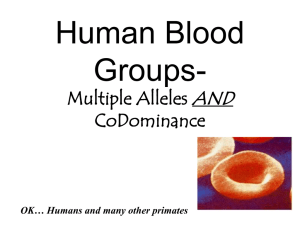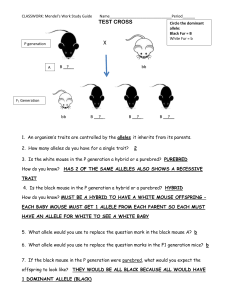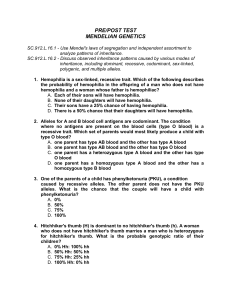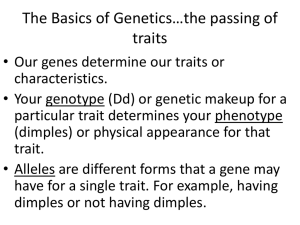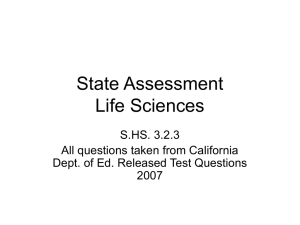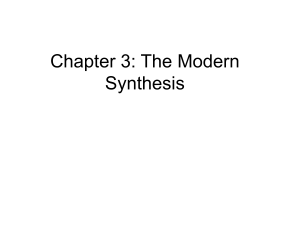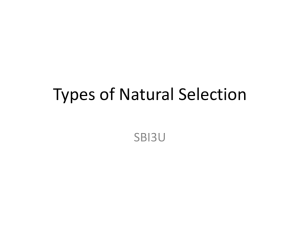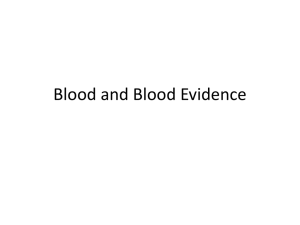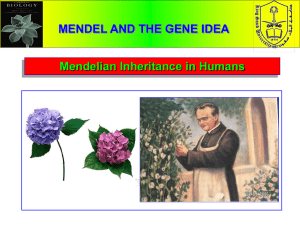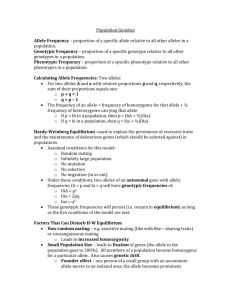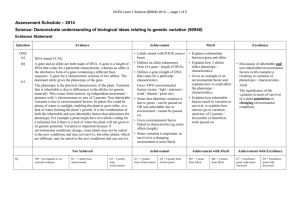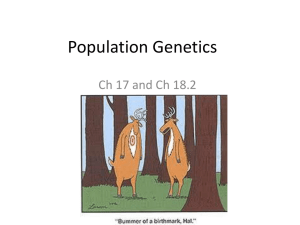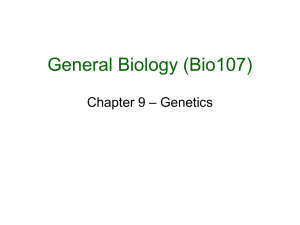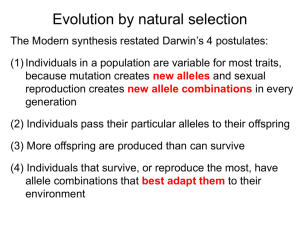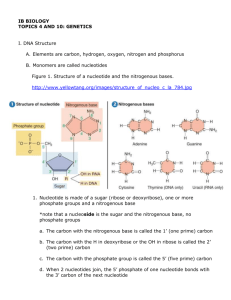Chapter-11-Monohybrid-Cross
advertisement
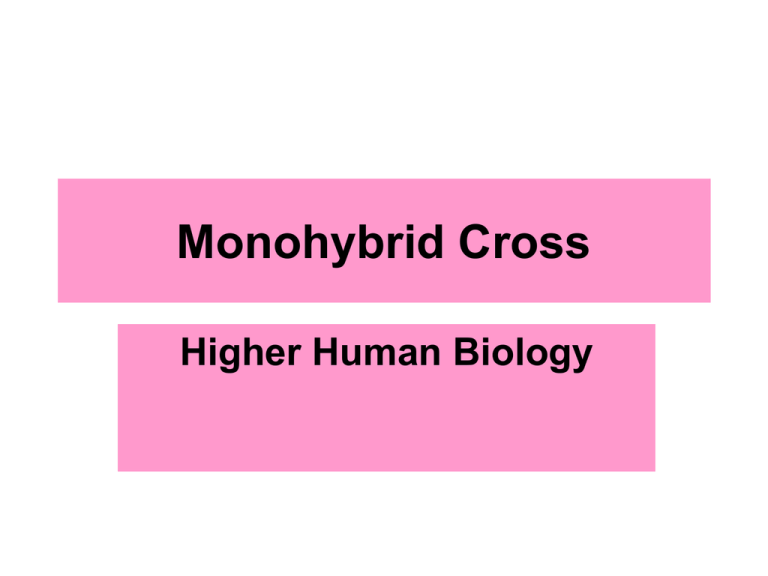
Monohybrid Cross Higher Human Biology Lesson Aims • To revise and consolidate understanding of monohybrid crosses • To examine Rhesus and Rhesus- blood groups • To learn about different conditions caused by genetic mutations • To find out the difference between incomplete dominance and co-dominance History • Gregor Mendel - The Father of Genetics • 1. Monk who used science and maths to establish patterns in how traits were inherited 2. Year 1857 3. He used the garden pea as his test subjects • Some Vocabulary • Character - a heritable feature (eg flower colour) Trait - a variant of each character (eg purple or white) Cross Pollination - one plant fertilizes a different plant Self Pollination - a plant fertilizes itself True-Breeding - plants that over several generations only produce plants like themselves • Mendel’s Experiments - a Monohybrid Cross • cross involved plants that differed for a single character: tall x short, purple flower x white flower, round seed x wrinkled seed • P (Parental Generation) True breeding plants F1 (First Filial) The offspring of the P generation --> they always displayed a single trait, the dominant one F2 (Second Filial) The offspring of the F1 generation, self fertilized --> always had a 3:1 ratio Mendel’s Law of Segregation • The Law of Segregation: two alleles separate during gamete formation (a Tt parent can produce both T sperm, and t sperm) • A punnet square is a representation of this law, showing how gametes separate and then come together during fertilization • Locus - spot on the chromosome where an allele (gene) is located. • Monohybrid Inheritance in Humans • Tongue rolling is inherited as a simple Mendelian trait • R is the allele for roller • r is the allele for non-roller Genetics of Tongue Rolling Rhesus D Antigen • Antigen D is found on the surface of some people’s red blood cells • Rh+ (rhesus positive) posses this antigen • Rh- (rhesus negative) do not possess this antigen • If a Rh- person is given Rh+ red blood cells during a transfusion the persons immune system responds by producing anti-D antibodies. This leaves the person sensitised. • If this person receives more Rh+ red blood cells they suffer from severe or fatal agglutination. Agglutination of Red Blood Cells • Presence of Antigen D is genetically dominant (D) • Lack of antigen D is due to a recessive allele (d) P DD x dd (Rh-) (Rh+) F1 all Dd (Rh+) or P dd x Dd (Rh-) (Rh+) F1 Dd and dd (Rh+) (Rh-) • Albinism - inability of the body to make melanin - inherited as simple Mendelian recessive trait • Cystic Fibrosis - disorder of the mucus secreting glands - simple Mendelian recessive trait • PKU – inborn error of metabolism – simple Mendelain recessive trait Huntingdon’s Chorea • Degeneration of the nervous system which leads to premature death • Determined by dominant allele • Allele not expressed in phenotype until about 38 years of age when sufferer will probably have had a family and passed on the allele Incomplete Dominance • Occurs when the recessive allele has some effect on the heterozygote. • An example of incomplete dominance is illustrated in the condition known as sickle cell anaemia. • The haemoglobin produced is an unusual type called haemoglobin S which is an inefficient carrier of oxygen • HH x HH all offspring HH - survive • HH x HS offspring HH, HH, HH, HS survive • HS x HS offspring HH, HS, HS, SS – 75% survive (SS dies) Co-dominance • Describes the situation where two alleles can be expressed in the heterozygote, neither suppressing the other. • This is seen in the MN blood grouping. MN Blood Group • M and N alleles are co-dominant (both alleles expressed in the phenotype of the heterozygote • MM blood group have M antigens on rbc • NN blood group have N antigens on rbc • MN blood group have both M and N antigens on rbc ABO Blood Group • Antigens coded by a gene that has three alleles A, B and O. • Allele A produces antigen A Allele B produces antigen B Allele O produces no antigens • Alleles A and B are co-dominant to one another and completely dominant over allele O The Facts You Need To Know • p6 • from “monohybrid inheritance depends on…” • to “if an individual has the genotype AO…”
